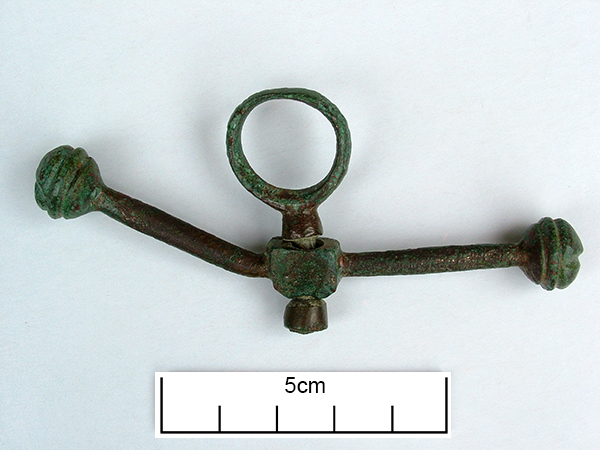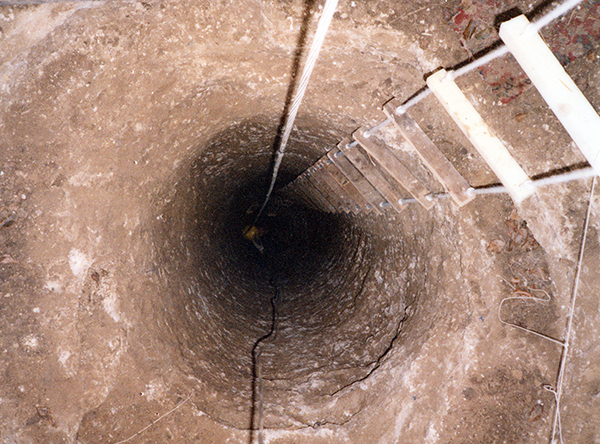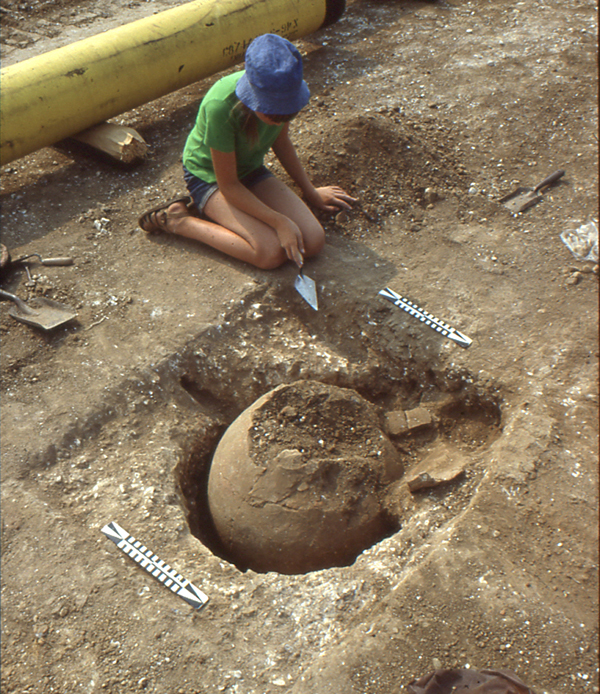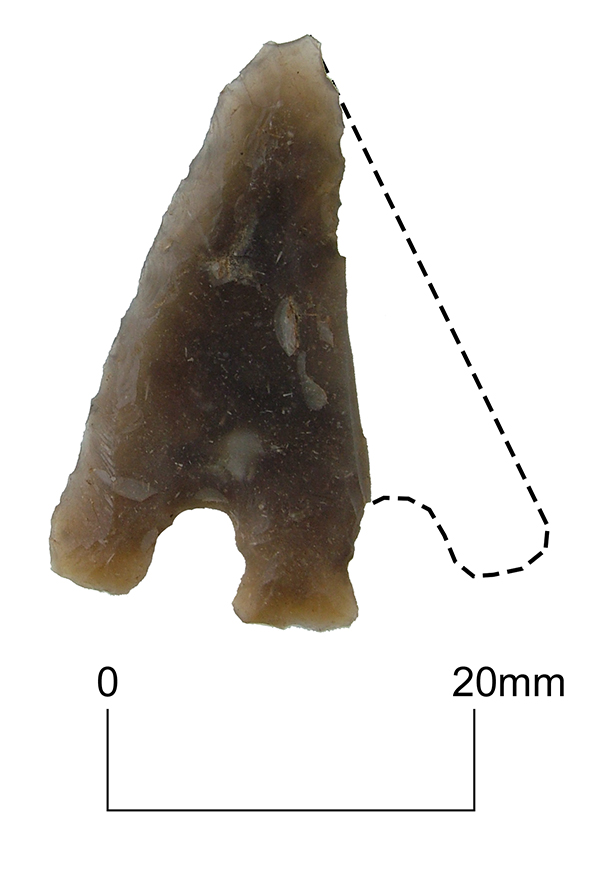 Today’s image for Day 270 of the VM_365 project shows a medieval copper alloy purse frame dating from the period 1474-1550 which spans the reigns of Edward IV, Edward V and Richard III. The purse frame was found in the excavation of a medieval well at Little Cliffsend Farm that was previously featured on VM_365 Day 251.
Today’s image for Day 270 of the VM_365 project shows a medieval copper alloy purse frame dating from the period 1474-1550 which spans the reigns of Edward IV, Edward V and Richard III. The purse frame was found in the excavation of a medieval well at Little Cliffsend Farm that was previously featured on VM_365 Day 251.
The metal frame would have supported a fabric or leather purse suspended from the bar, one of the arms of which is now bent. The purse and frame would then have been suspended from a belt or other strap by the central, swivelling, suspension loop.
We can only speculate as to whether this was just an item thrown away with other waste into the well, or whether it was an unfortunate loss by someone leaning over the edge to draw water. Either way it seems that the purse was empty when it ended up in the well.


